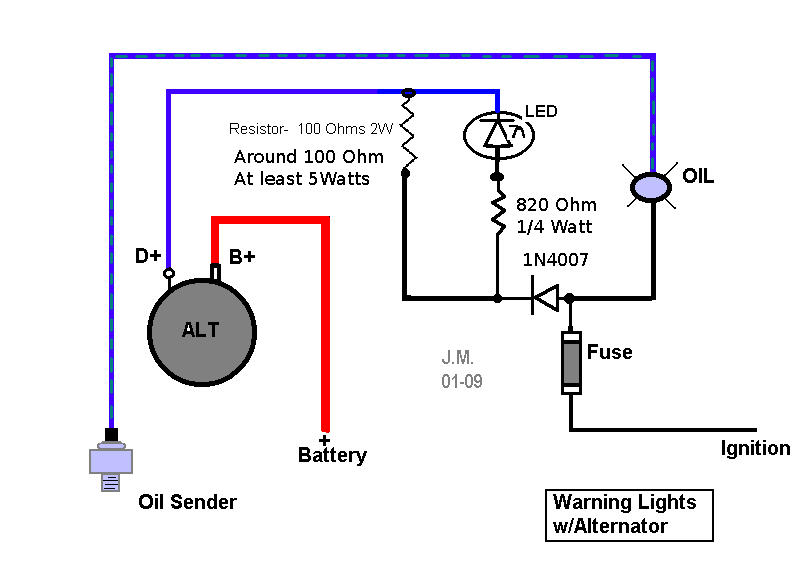take a look here
http://www.locost.co.za/forum/viewtopic.php?f=6&t=1729
and this is my preferred alternator light arrangement

When O posted this on the Sarf Effirken forum I was asked what the diode was for. This was my response:
I cribbed the circuit off a VW Instrument cluster. I was in a hurry and not overly interested in why it worked only that it did in fact work. It was for use on a drilling rig going into deepest darkest Africa, so all that mattered was that it worked well AND reliably. In the years I was with VW and Audi we never had a charge light failure that was related to anything on the circuitry on the cluster. In my eyes that's a pretty reliable circuit. Several years later now and I've had no comeback from those drill rigs.
Now as to some quick thoughts as to why we have a diode in the circuit.
1.The W or D+ terminal does put out a voltage when charging, so I think the diode is simply a blocking diode to prevent a backfeed.
2.LED's don't like reverse voltage. Reverse voltages as low as 5volts can cause them to self destruct.
3.It may not even have been related directly to the charge circuit.
Component values:
The 1n4007 can be almost any diode rated around 1 Amp.
The 820 Ohm resistor could be any quarter watt or bigger resistor between 680 and 1200 Ohms, it only prevents the LED from self destructing.
The 100 Ohm resistor could be anything from about 90 to 120 Ohms and at LEAST 5 watts (10 or 15 would be better), any lower on the wattage and heat becomes a HUGE issue. I have measured lower wattage resistors getting over 200 degree's Celcius.
Feel free to post any other questions, we all benefit from them.